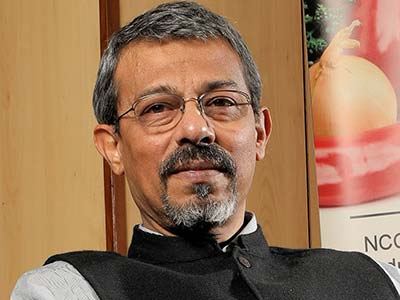In an Exclusive interview, Pawanexh Kohli who is Former Chief Executive and advisor to India’s National Centre for Cold-chain Development(NCCD) , said that the biggest fear is that vaccine may prove ineffective against the future strain of virus.Therefore deployment of the vaccine should be extensive and expansive.
What would be the first step basic step involved to start Mass vaccination?
A mass vaccination exercise will require diligent planning and like all successful supply chain strategies, the basic step must be to first identify the destination points. Thereafter, after terminal inoculation centres are known, the strategy will be able to work backwards to distribution depots, to a regional store or the source manufacturer. The long haul from source to distribution depots will be planned as a bulk movement and from depot to inoculation centres in smaller tertiary shipper boxes. Each shipper box can carry 5 to 10,000 doses so that can be replenished every few days or weekly. The identifying of first recipients is just a diversion and efforts should be applied to identify vaccine givers and inoculation centres. In fact, the vaccine givers should be the first recipients, and they should receive their dose at least 2 weeks before they start inoculating the others in their zone.
How the distribution of a vaccine will be done to make the process smooth?
First concern will be to administer the vaccine in a socially distanced environment. A vaccine taker should not run the risk of picking up COVID19 even while waiting to receive the vaccine. Therefore, existing movie halls, restaurants, schools, convention halls should be designated as vaccination centres. Luckily they are all under occupied or empty, most already have cold rooms which can hold the vaccine at 2-8 °C for a couple of days.
Even railway coaches can be compartmented and quickly converted into inoculation centres, and a vaccine train can be deployed in each region – to service rural areas as it moves from village to village. Similarly, a group of vaccine buses can be used as mobile inoculation centres. The same infrastructure can be used at multiple locations.
A one way flow of people must be maintained and crowding must be avoided. Further, to ensure that a schedule is maintained, a ‘vaccine deposit’ can be refunded if the recipient will abide by the program. Another option is to offer a coronavirus insurance for a year if discipline of schedule is kept. Lastly, the actual distribution of the vaccine should be matched against return logistics of used syringes and vials from each location, to safely manage the medical waste that will be generated and as a double check avoid incorrect reporting.
Each vaccine taker should be marked with indelible ink, like is done after voting, and as a sign of social responsibility. Of course, Aadhaar linked digital records should also be kept.
What is the procedure to be followed for storing a vaccine?
Storage should only be to buffer the supply, with the agenda being to maintain a high throughput of vaccines. After all, the vaccines are not being made to be stored nut to be distributed. Any storage, in-situ or in transport, should be monitored for 3 parameters – for time & location though GPS, for temperature through data loggers, for excursions through thermos-chromic labels. The first would apply to the basic article of carriage, the second to tertiary packaging or individual boxes, and the last to individual vials. This will ensure a very high level of safety in the distribution network and mitigate risks. Usually any vaccine movement is monitored in a similar fashion, and in this case will probably require more close monitoring.
It will be imperative that the temperatures are maintained within the set parameters. Either within the range of 2 to 8 °C, or below -20 and/or below –70 °C depending on the vaccine. We must also keep in mind, that in cold climates, such as J&K these days, space may need to be heated to keep the temperature. So, it is not always refrigeration for cooling, but could also require heating. Data loggers will be important so that out-of-range parameters is flagged off and that batch can be discarded.
Another option is to store the vaccine in thermal shippers with passive cooling, and inside actively refrigerated space (like cold rooms and reefer trucks). A far higher level of redundancy will be in-built in case of cooling failure. This is not too dissimilar to ice-lined refrigerators, where the refrigeration system is buffered with the passive cooling system.





